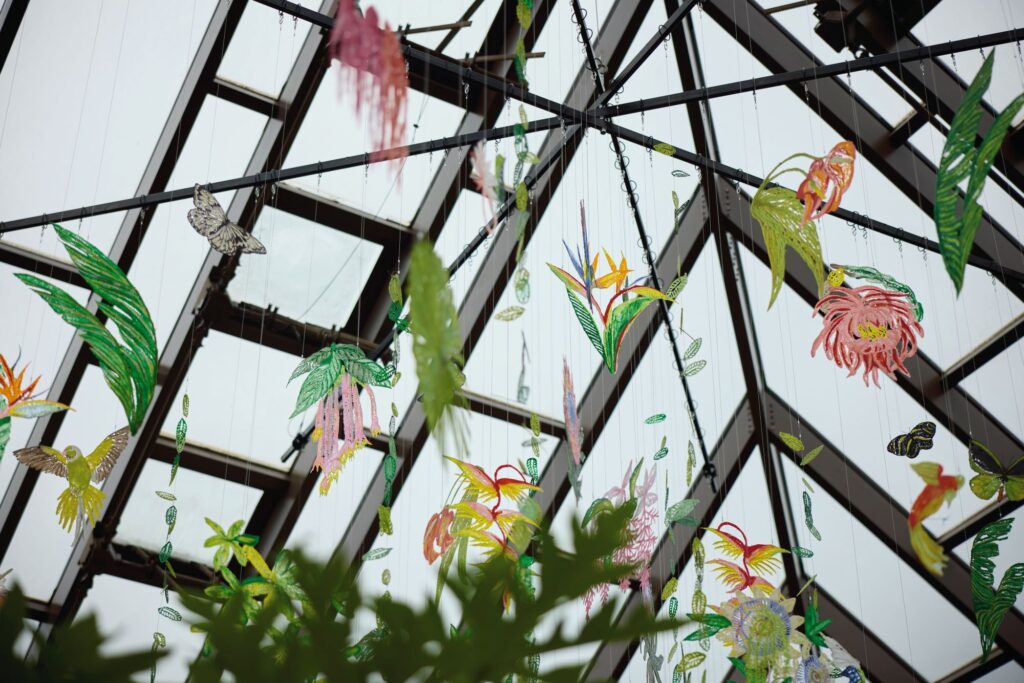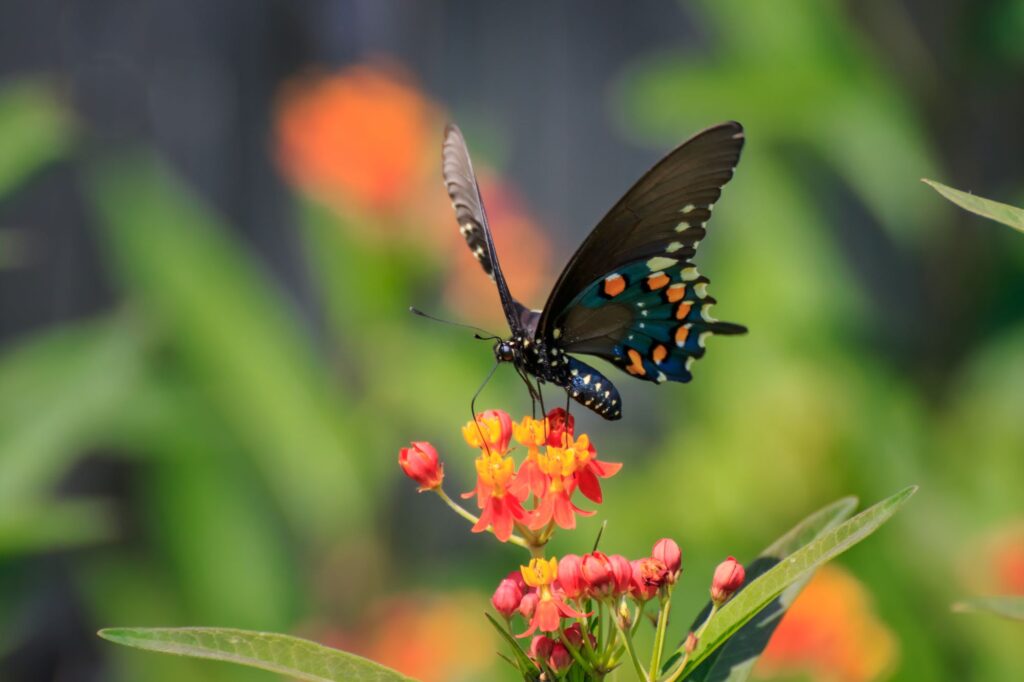
Every year, a new featured artist is invited to cultivate a special installation for Painted Garden in Powell Gardens’ glass-domed Conservatory. Kate Clements is this year’s featured artist, showcasing SUPER NATURAL now through June 16, 2024.
Working with frit, a type of crushed glass, Clements sifts, scatters, and pushes the sugar-like substance on a kiln shelf to form dimensional drawings. Learn more about Clements, her artistic process, and SUPER NATURAL below.
Can you tell us a little bit about your artwork and process?
I construct delicate and ornate large-scale paintings and installations comprised of kiln-fused glass panels. The wafer-thin panels reference naturalistic designs and floral motifs that I use to explore ideas of beauty, taste, and impermanence. Utilizing the seductive qualities of glass, I draw the viewer in, but upon further inspection the work reflects a nervous tension and precariousness that is palpable.
The intricate patterns are created using frit, a type of crushed glass. I sift, scatter, and push the sugar-like substance directly on a kiln shelf to form dimensional drawings. The once powdery material solidifies and contracts into a crystalline web of transparent glass. I meticulously lay out the design, but there is a wonderful loss of control as the material is transformed in the kiln through time and temperature. Its transformative qualities hide its own materiality, allowing the glass to appear to be in action: growing or dying, melting or freezing.
How did you get into glass?
I was introduced to glass almost by accident. When I was 17, I went to a Pre-College Art Lab (PCAL) at the Kansas City Art Institute. We were supposed to pick a subject to study over a couple weeks. I had picked plein air painting and photography, but they were full so I was placed in the kiln fired glass workshop instead. It’s amazing how a small decision like that can change the trajectory of your life.
Once I became a student at Kansas City Art Institute, I was hired by the professor I met at PCAL for a work study position for the glass elective, and that was my job during college. There wasn’t a Glass Department and although I learned the basics of fusing glass, I wasn’t exposed to contemporary glass artists or a wide range of techniques. It was left up to me how far to push the material. I had nothing to compare myself to, no right way to work with it, and that was very freeing.
I never considered myself a glass artist during undergrad. I was technically studying painting and simultaneously doing lots of painting, sculpture, and installation. It wasn’t until I left school and no longer had access to the glass facilities that I realized that perhaps that glass was the material that best translated my ideas. It felt the most authentic.
I realized I needed more technical guidance to continue working with glass. I chose to pursue a Masters in Glass at the Tyler School of Art & Architecture in Philadelphia. It was while I was there that I became aware that the way I was working with glass was uncommon even in the glass world. With their support, I took the leap to working in large scale installations and began pushing the fragility of the material.
What inspired you to make SUPER NATURAL?
I wanted to capture the wonder and sense of awe that nature can instill in us. I focused primarily on tropical foliage. For many people, especially in the Midwest, these plants exist as house plants that remain contained in pots and a certain size. I had the opportunity to go to Miami last summer and seeing many plants that I own in their true environment and immense scale was so inspiring. I wanted to make a radial tropical explosion of life.
As you move around the work there’s always something new to discover. The wafer-thin panels disappear into the air at certain angles, only to reveal a new composition. Certain spokes of the installation mirror each other, giving a sense of order to the chaos.
There is a lot of joy in this piece. At times that was hard for me to channel as the making of this work coincided with my father’s battle with pancreatic cancer. It was challenging to go into the studio and try to create work that didn’t necessarily reflect how I was feeling. However, once we were in space and began installing at Powell Gardens, I was so grateful that those were the emotions I had channeled.
There are so many hard things in the world. I hope that this installation welcomes people to take time to slow down, sit, and contemplate. To look up not only at the work, but the sun, the moving clouds above their heads and have a moment of wonder and awe.
Related Posts


